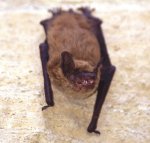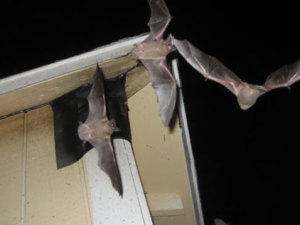Minneapolis Bat Control Bat Removal MN
Bats are truly wonders of nature. They represent the only flying mammals (flying squirrels glide but cannot fly). The sonic, directional, object detection ability not only serves them well while flying, but it was studied as a part of various research projects during the development of radar and sonar. Bat species in Minnesota are primarily insectivores.
Bats breed but once a year and depending on the species, females deliver one or two pups. By early August the young are flying along with the adults, but, until then, they are confined to the roost while the adult females fly in and out to hunt and feed their young. Males live separately from females until the fall migration when the sexes mingle and spend the winter together at their hibernation sites.
Bat Removal MN
All of Minnesota bats feed on insects such as beetles, moths, flies, and mosquitoes, etc. Bats mate in fall and winter, giving birth to young between April and July. Young bats grow very vast and can fly within three weeks.
People are most likely to encounter nuisance bats when a roosting colony takes up residence in a building. Attics often make excellent
habitat, as do barns. Bats need only a half inch or less of space to crawl through in order to enter a building. Once inside, if the habitat is good, the colony grows until the homeowner notices the bats flying out of the building, notices the droppings in the attic, chimney, outside, or even basement. Sometimes a bat will get lost and find its way out of the attic and into the living area.
Getting rid of bats requires experience. If your house is currently under attack by bats it is wise to call a professional. Permanent exclusion is the best way to remove bats. First, all entry points must be located and repaired. Professional bat removal ensures that the colony will no longer use your home or business as a roosting area, and that no bats can get back in.






